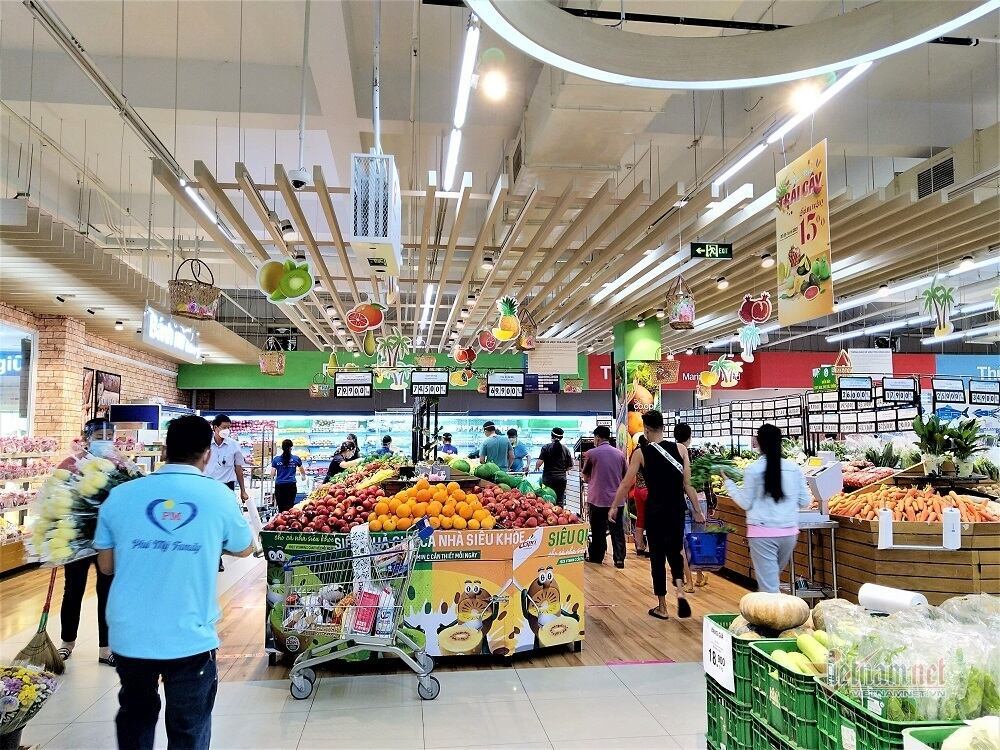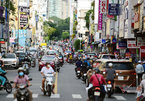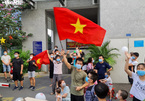
Representatives of eight associations of enterprises in key industries in the economy have sent a petition to the Prime Minister, suggesting opinions to the Ministry of Health's (MOH) draft guidance on adapting to Covid-19 safely.
Businesses commented that the five criteria set by MOH are clear and scientific for assessing risk levels. However, the draft only gives general guidance, and doesn’t take into account the differences of the regions in the country. Therefore, the criteria are not flexible enough. Meanwhile, some tentative regulations aim at ‘zero covid’, not ‘living together with Covid’.
According to the associations, the draft sets very tight control on pandemic zones and requires too much testing even when people are fully vaccinated, which is not necessary.
If referring to the criterion about vaccination in the draft (more than 80 percent of people aged over 50 are fully vaccinated), HCM City is still far from reaching the fourth level (2-3 more months).
This will seriously affect business development because even fully vaccinated people cannot return to work.
Moreover, associations believe that the restrictions in travel and participation in economic activities and traffic, applied to fully vaccinated people and recovered Covid cases, are not necessary.
Therefore, it would be better to use the rate and consider the occupancy rate of hospital beds and ICU beds to make reasonable adjustments (WHO’s guidance released on June 14 shows different levels, but has not been considered in the draft) to make reasonable adjustments.
Meanwhile, it would be dangerous if applying the criteria for Level 1 (new normal) immediately to areas which have controlled the outbreak well.
The draft says a region would be listed as low-risk if it has 20 or smaller newly infected cases per 100,000 people a week. But the vaccination rate is still low in the localities.
The draft regulation is unreasonable if considering the current pandemic control capability.
| There should be a specific strategy for a transitional period which lasts 3-5 months for the cities/provinces/zones which are controlling the outbreak well. The control needs reducing isolation areas before full reopening as well as sufficient vaccination coverage. |
Hanoi has 8 million people, and 20 cases per 100,000 people means 230 cases a day. During the fourth outbreak, Hanoi had 50-70 cases a day and the situation was so serious that municipal authorities had to impose social distancing lasting two months, from July 24 to September 21 to be able reduce the daily cases to below 20.
If Hanoi only imposes social distancing when there are 230 new cases a day, it is highly possible that it would fall into a serious situation like HCM City (over 1,000 cases a day and not imposing social distancing until July 24).
The associations believe that there should be a specific strategy for a transitional period which lasts 3-5 months for the cities/provinces/zones which are controlling the outbreak well. The control needs reducing isolation areas before full reopening as well as sufficient vaccination coverage.
The associations also point out that the draft still cannot guarantee the reduction of mortality rate because of the lack of the criterion on hospital beds and ICU beds for cases that need intensive care.
The bed occupancy rate should be set as an important index to assess the pandemic situation. Once people are fully vaccinated, it will be no longer necessary to count the number of cases, but it will be necessary to count the bed occupancy rate. Asymptomatic infections or infections with mild symptoms will treat themselves at home.
Transitional steps needed
The associations have suggested applying two strategies to control and pandemic and recover the economy.
There should be a strategy for the transitional period (from now to early the first quarter of 2022). The zones which have large vaccination coverage will reopen earlier. A transitional period will be necessary to prepare to live together with virus. Zones will be classified into two groups which would have reasonable treatment:
Zone 1: areas hit by pandemic, under Directive 16. Allowing fully vaccinated people and recovered Covid patients to resume work. Adjusting social distancing measures to fit the risk levels, bed occupancy rate and vaccination rate. There should be guidance for enterprises to handle their positive cases. Do not close production workshops if positive cases are found.
Zone 2: areas where the virus spreads slowly, or there is no positive case. If there are 0.7 new cases per 100,000 people per day for one week, it will be necessary to raise the alarm level, but no need for large-scale isolation.
Consider a curfew in communes and wards with high numbers of positive cases. Stop non-essential activities in residential areas neighboring pandemic areas or areas with high epidemiological risks.
The areas fully vaccinated will switch to ‘new normal’ and all isolation measures will be removed.
The period of ‘living together with virus’ (from mid-Q1 2022): full reopening will be implemented when more than 70 percent of people aged 18 and above are vaccinated.
Tran Chung - Luong Bang

HCM City wants to have its own regulations to reopen the economy
With specific conditions, Ho Chi Minh City has asked for the Prime Minister’s permission to apply special regulations to reopen the economy.

Roadmap to 'new normal' state to be issued before September 15
The Ministry of Health is working on guidance on the roadmap to return to the "new normal" and reopen the economy, scheduled to be issued by September 15.